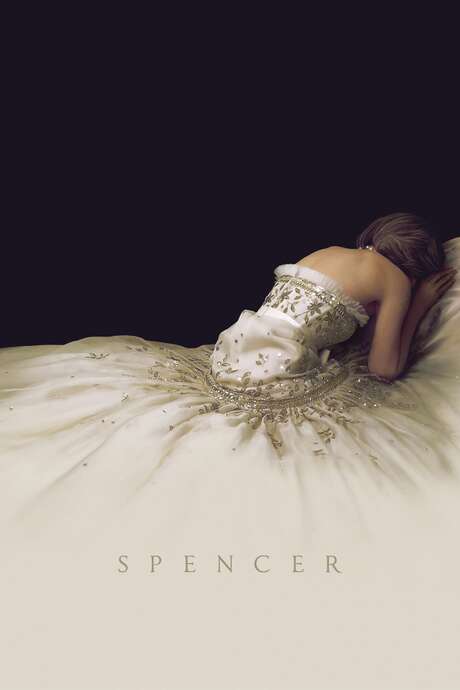
There are two images for this movie: one has Diana in a red dress with a thin veil over her face, posing for the cameras. The one at the left is the less used one because it is (in the movie) Diana in front of a toilet, puking.
A lot of people won’t like the movie even though many reviews have called it a masterpiece, because they make the mistake thinking that it’s about Diana during one weekend of her abysmal life. It is actually about authoritarian regimes and the impossibility of living under them. In this case, the royal family stands as a metaphor for a political system in which all its members are trapped. Diana is the only citizen of this regime to demand her freedom, and she pays the consequences.
To some extent, it stays within the facts of her life and the weekend she stayed at Sandringham when she knew the marriage was falling apart. But it takes huge fictional turns and I think it’s because the director wanted to emphasize the prison like aspect of life in this world. When she tries to go visit her childhood home (compete fiction), she comes up against fence with barbed wire at its top. When someone complains that she didn’t close the drapes to change into one of her 15 to 20 dresses she is supposed to wear that weekend, the drapes are sewn shut, also with wire. This is done because there are supposedly photographers prowling around the grounds, even though the grounds are patrolled constantly. She even gets caught by two of the guards who insist they must report the incident. Most of this is probably not true. But every moment, including scenes at dinners with the family and even in the Queen’s Christmas day speech, the question of freedom is the central question. And Diana’s bulimia and self cutting, and even some hallucinations she has, are really questions about suicide being an answer to a lack of freedom.
This isn’t a film about Diana, and I think that’s part of the reason it’s called Spencer. And it’s not about the pomp of the royal family, or the worthiness of the Windsors to even be royalty, whatever that means today. It’s almost an anti-royal story and there are many times it’s hard to remember that the director and writer are using Diana Spencer as a model for what they’re trying to say. You won’t think, by the end, that you saw a story about the real person and that’s what makes it so powerful.
When “the firm” allows Diana’s favorite dresser to return from Kensington Palace, where Diana lived until she was evicted, the mood suddenly changes and joy returns. This is because — and this is probably the ultimate message of the story — her dresser is in love with her. Not just a sisterly love but a head over heels gay love. Diana can’t reciprocate, but it’s love that saves her in this movie, including the love she has for her boys and the innocent pheasants that are just “there to be killed,” as the Queen mother’s equerry explains.
